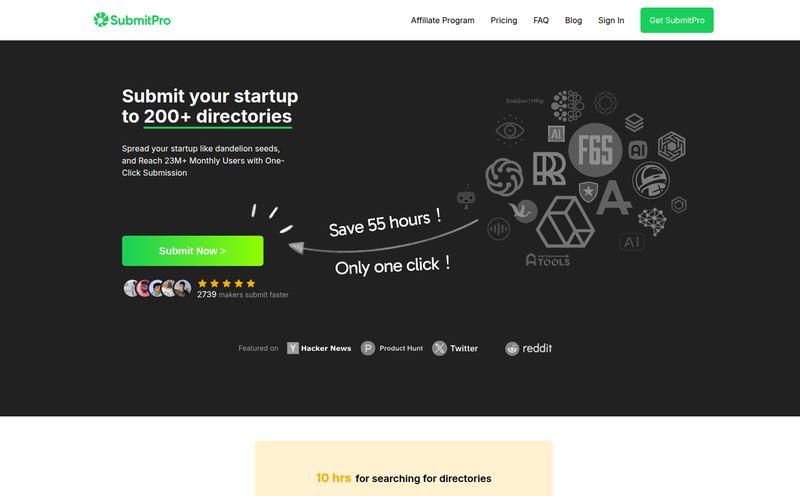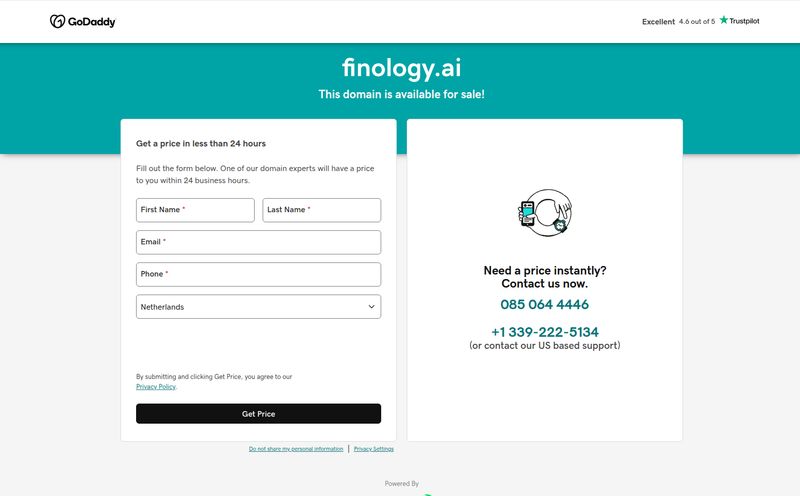How many different places does your customer data live right now? You've got your CRM over here, your e-commerce platform over there, your email service provider in another corner, and maybe some offline data in a spreadsheet that Sheila in accounting updates once a quarter. It's a mess. I call it "data spaghetti"—a tangled, chaotic plate of information that's impossible to make sense of. We’ve all been there, trying to launch a campaign and realizing we can’t even get a single, clear view of our customer. Frustrating, right?
Every so often, a platform pops up that promises to be the ultimate data un-tangler. Recently, I've been getting a lot of questions about a platform called Scal-e. It positions itself as an "agile marketing platform & CDP," which is a fancy way of saying it wants to be the central nervous system for all that chaotic data. And their big promise? To take you "from customer data to loyalty." A bold claim. So, I decided to roll up my sleeves, put on my skeptic's hat, and really see what's under the hood.
What is Scal-e, Really? Beyond the Jargon
Okay, so 'Customer Data Platform' (CDP) is a term that gets thrown around a lot, and frankly, it's starting to lose its meaning. In my book, a true CDP does one thing exceptionally well: it creates a single, persistent, unified customer database that is accessible to other systems. It’s the single source of truth. The one profile to rule them all.
Scal-e seems to get this. It's built from the ground up to ingest data from all your different sources—online, offline, even on-chain crypto data from what I can gather—and stitch it all together. The goal is to create what the French call a Référentiel Client Unique (RCU), or a unique customer repository. It's about building a 360-degree view of your customer that isn't just a fantasy on a PowerPoint slide. This unified view becomes the foundation for everything else: personalization, retention campaigns, and building actual loyalty.
The Core Features I'm Actually Paying Attention To
A feature list is just a list until you see how the pieces fit together. Scal-e is modular, which I appreciate. You’re not forced into a monolithic system with a bunch of tools you’ll never use. Here’s what stood out to me.
The CDP: Your Data's New Command Center
This is the heart of the operation. Scal-e’s CDP module is all about data unification and, crucially, data quality. It's not just about dumping everything into a lake; it’s about cleaning it, de-duping it, and making it reliable. It includes tools for ETL (Extract, Transform, Load) and DQM (Data Quality Management), which are the un-sexy but absolutely critical parts of making data usable. Without this, you're just making bad decisions faster.

Visit Scal-e
Privacy by Design, Not as an Afterthought
In a post-GDPR and CCPA world, privacy can’t be a feature you bolt on at the end. I've seen too many platforms treat it that way. Scal-e appears to have woven data privacy into its very fabric. This gives you the tools to manage consent and preferences centrally, which is a massive relief for any marketer operating in Europe or California. It’s about respecting the customer, which, surprisingly, is a great way to build loyalty. Who knew?
Building Audiences and Orchestrating Journeys
Once your data is clean and unified, the fun begins. The Audience Builder allows for some pretty granular segmentation. You're not just looking at demographics; you can slice and dice your audience based on behavior, purchase history, and engagement across any channel. This then feeds directly into the Customer Journey Orchestration module. We're talking true omnichannel automation here—email, SMS, social, direct mail—all working from the same brain. This is how you stop sending a discount offer for a product someone bought at full price yesterday.
The End Game: Loyalty and Intelligence
This is where Scal-e connects the dots back to its main promise. It offers a dedicated module for building out loyalty programs, managing rewards, and creating preference centers that let customers tell you what they want. It’s a powerful feedback loop. And to measure it all, there's a BI (Business Intelligence) self-service tool. This means your team can build their own reports and dashboards without having to file a ticket with the IT department and wait three weeks. A small detail, but a game-changer for agility.
Let's Talk Money: Breaking Down Scal-e's Pricing
Alright, the part everyone's waiting for. If you go to their pricing page, you won't find a simple three-tiered SaaS plan. And I have mixed feelings about that. On one hand, the lack of transparency can be a bit annoying. On the other hand, it signals that they’re not selling a one-size-fits-all product. This is a tailored solution.
Their pricing seems to be broken into three main components: Implementation Cost, Platform Cost, and Additional Services. It’s... complex to say the least.
| Cost Component | Details |
|---|---|
| Project Implementation | This varies. A Client Project starts from €3,000 but requires more work on your end. An Agency or Editor Project costs more but they handle more of the heavy lifting. |
| Platform Cost | This is modular. You can get the CDP Advanced or CDP Premium plans, and then add on what you need: Loyalty, Distributed Marketing, or Omnichannel Marketing Automation. You have to contact them for a quote. |
| Custom Packages | They offer to build a completely custom package based on your specific needs, combining any of their modules. |
So, what’s the takeaway? Scal-e is not for the startup running on a ramen noodle budget. This is a serious investment for companies that have reached a certain level of complexity and are feeling the pain of disconnected data. The pricing model, while opaque, is designed to build a solution that fits your business, not the other way around.
My Honest Take: Who Is Scal-e Really For?
After digging through everything, I have a pretty clear picture. Scal-e is built for established B2B and B2C brands that are tired of duct-taping their marketing stack together. If you're a mid-to-large enterprise with multiple customer touchpoints and a genuine desire to leverage your data, this is a platform worth investigating.
I saw a testimonial on their site from a company working with American vintage clothing—that feels like a perfect fit. Retail, e-commerce, travel, and even complex B2B industries with long sales cycles could get a ton of value here. It's for the marketer who understands that customer loyalty isn't built on flimsy gimmicks but on deep understanding and respect for the customer.
Who is it not for? If you're a small business looking for a simple email marketing tool, this is overkill. If you don't have the internal resources (or the budget for an agency project) to dedicate to a proper implementation, you won't get the full benefit. This isn't a magic wand; it's a powerful instrument that requires a skilled musician.
Frequently Asked Questions About Scal-e
- 1. What is a Customer Data Platform (CDP) anyway?
- Think of it as a central brain for all your customer data. It collects information from your website, app, stores, and support channels, and creates one single, unified profile for each customer. This clean, reliable data can then be used by your marketing, sales, and service teams.
- 2. How does Scal-e handle data privacy?
- It seems to be a core part of the platform. It's designed to help companies comply with regulations like GDPR and CCPA by centralizing consent and preference management. You can manage who gets what communications based on the permissions they’ve explicitly given.
- 3. Is Scal-e suitable for both B2B and B2C companies?
- Yes, its architecture is designed to be versatile. For B2C, it can unify individual customer profiles. For B2B, it can manage complex account structures, linking multiple contacts to a single company and tracking the entire buying committee's journey.
- 4. How much does Scal-e actually cost to set up?
- It varies. The most basic, client-led implementation starts at €3,000, but the total cost depends entirely on the modules you choose, the complexity of your data, and how much help you need from their team or an agency. You have to contact them for a custom quote.
- 5. Can I pick and choose which Scal-e modules I need?
- Absolutely. That’s one of its main strengths. You can start with just the core CDP and then add on the Loyalty, Marketing Automation, or other modules as your needs grow. It's not an all-or-nothing proposition.
Final Thoughts: Is Scal-e the Answer?
There's no single tool that can solve every marketing problem. But from my analysis, Scal-e is a very serious contender for businesses that have outgrown their current tech stack. It addresses the foundational problem that cripples so many marketing efforts: bad, siloed data. By focusing on data quality, privacy, and a modular approach, it provides a flexible and powerful blueprint for building a smarter marketing operation.
It's not a simple, plug-and-play solution, and it requires a real investment. But for the right company, the journey from chaotic customer data to genuine customer loyalty could very well start here. It's a compelling proposition, and one I'll be keeping a close eye on.



